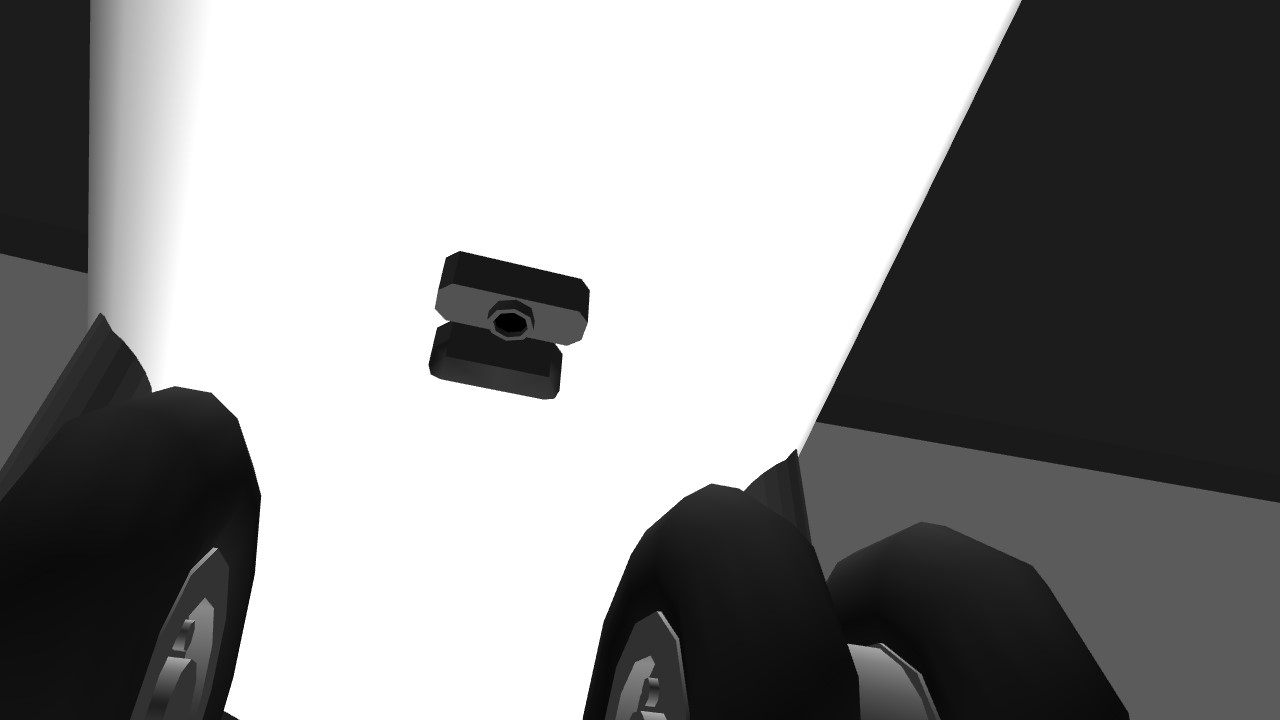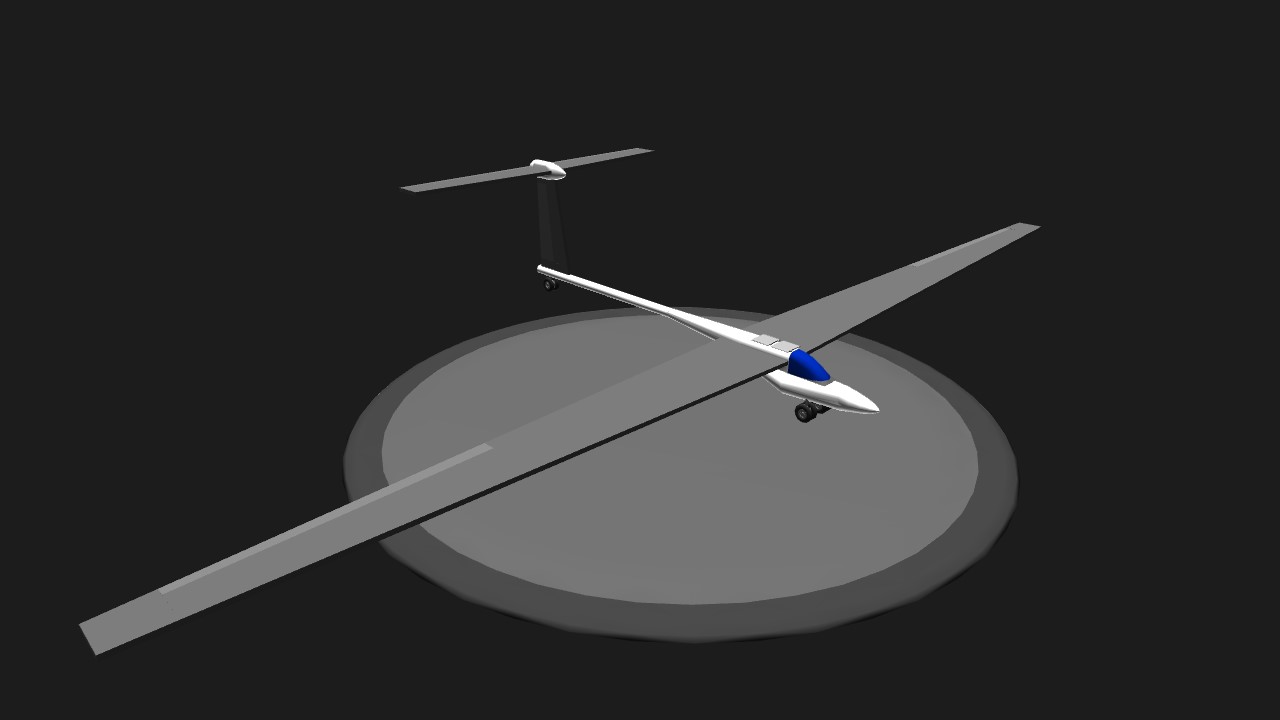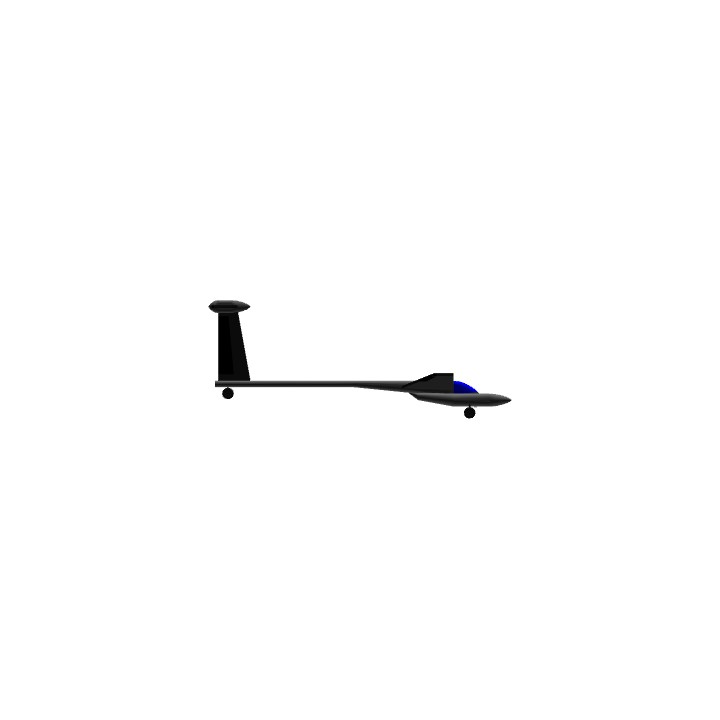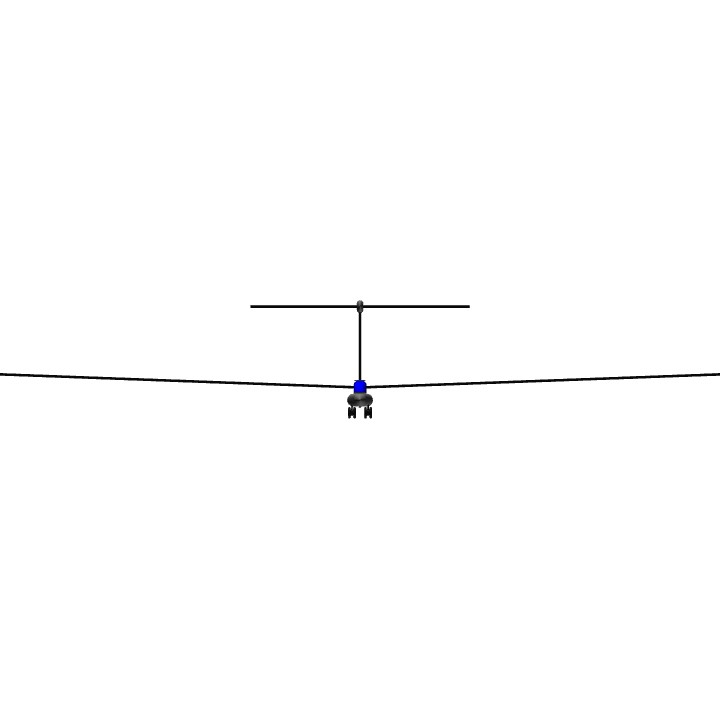What began as a fuselage modernization for the GN-1 evolved into a near total overhaul of my Glider concept. Thus, it was born again, the GN-2. Starting with a block-to-fuselage copy of the original airframe, and original wings/stabs/control surfaces, the aircraft had shed a few pounds. The improvement was marginal at best. Progressively whittling away the dubiously slender fuselage bodies, I reduced weight, as well as drag, even further. Favoring stability over maneuverability, I sought to move my CoG forward. I found that even if I emaciated the entire airframe to a mop handle, the CoG shift was almost imperceptible, despite this radical design change. I decided to add a 150 lb. ballast to the nose cone to great effect. Even so, the control surfaces were excessively sensitive, and were reduced to allow for smoother transition. Now the glider can be more precisely controlled. However, this reduction applied to the rudder made spin recovery nearly impossible. Thus, the rudder was dramatically enlarged. Another problem addressed was the means of dissipating unwanted speed without climbing. Previously I used gentle S-turns, or in times of urgency (landings), quickly flapping the rudder back and forth to disrupt laminar air flow, while maintaining a somewhat small discrepancy in heading. Two air brakes were added for different purposes. The front brake is for landing, applying braking in a constant manner, as the pilot focuses on the other controls. This is activated by #1, and engaged with +VTOL. The brake to the rear is intended for short, intermittent airspeed trimming. This is activated by #2, and engaged with -Throttle. This also coincides with Landing gear braking. A camera was added to the bottom of the fuselage for a better view of what is directly below. The most important new features are the buoyancy cells added to certain fuselage segments. The map in this game currently consists of two far-flung island clusters, 4 airstrips, and two Aircraft Carriers. These scant accommodations sit in an infinite, nondescript ocean. This can sometimes force a water landing. The buoyancy cells keep the cockpit above water. The sunken craft becomes its own lifeboat. The pilot can escape and signal for help. Water landings are more survivable, and the craft can be recovered for usually minor repairs. The Glider Reborn: More than meets the eye!
Specifications
General Characteristics
- Created On iOS
- Wingspan 91.6ft (27.9m)
- Length 38.5ft (11.8m)
- Height 15.3ft (4.6m)
- Empty Weight 1,213lbs (550kg)
- Loaded Weight 2,255lbs (1,023kg)
Performance
- Wing Loading 4.4lbs/ft2 (21.3kg/m2)
- Wing Area 516.9ft2 (48.0m2)
- Drag Points 1122
Parts
- Number of Parts 24
- Control Surfaces 5
- Performance Cost 227







Wow!